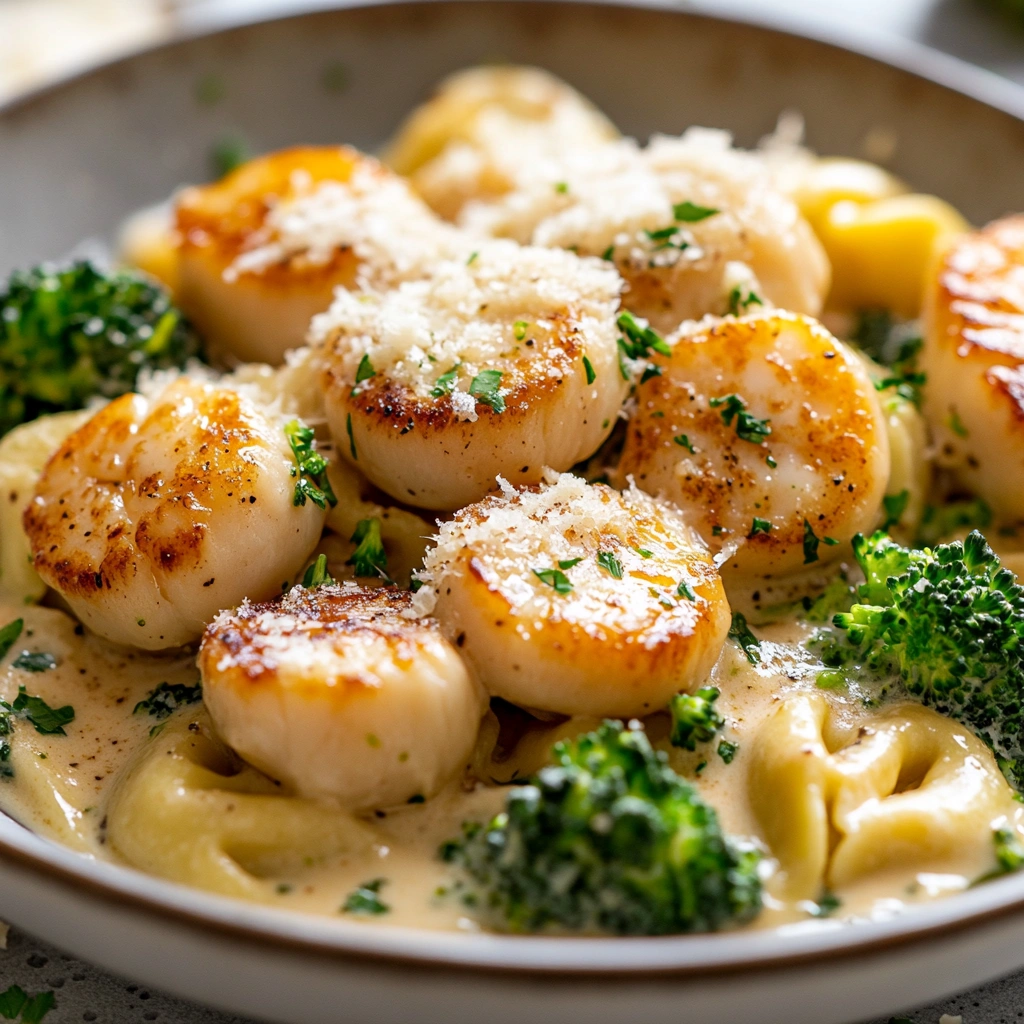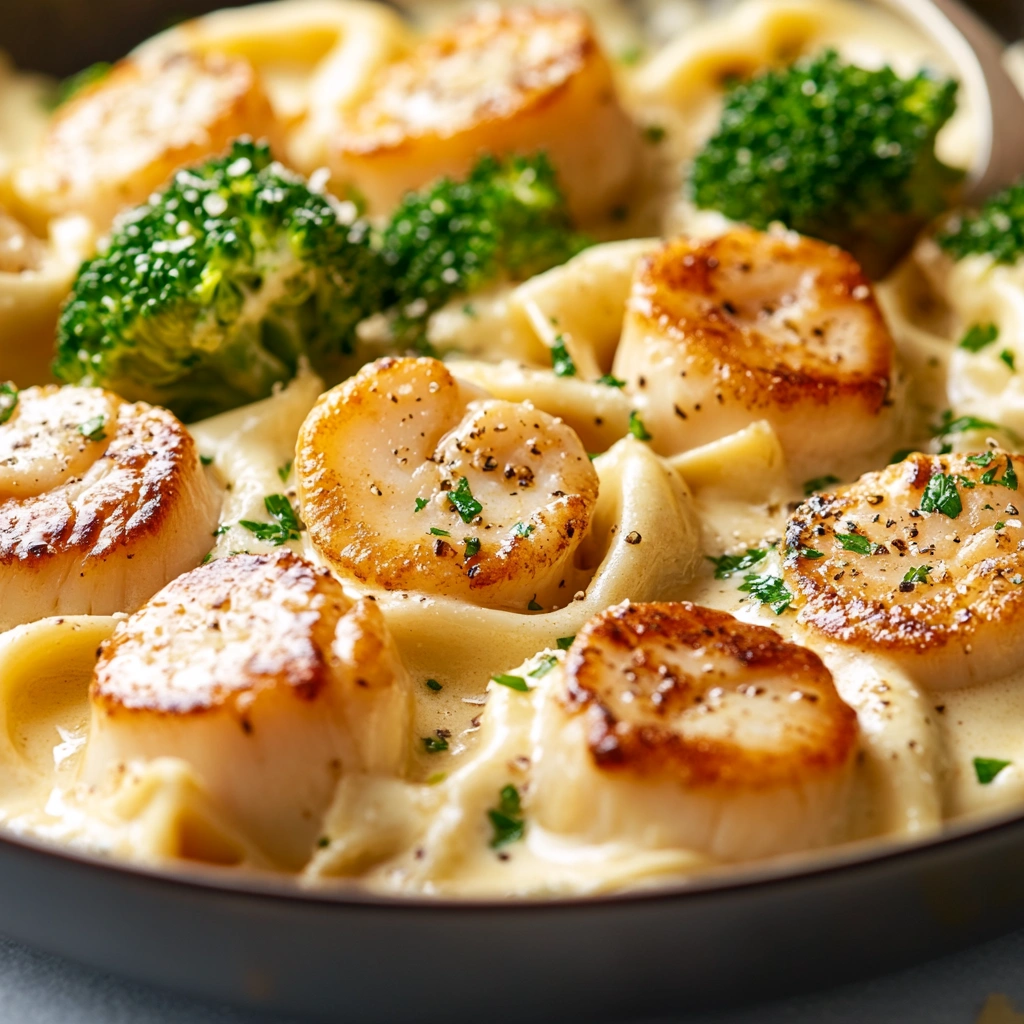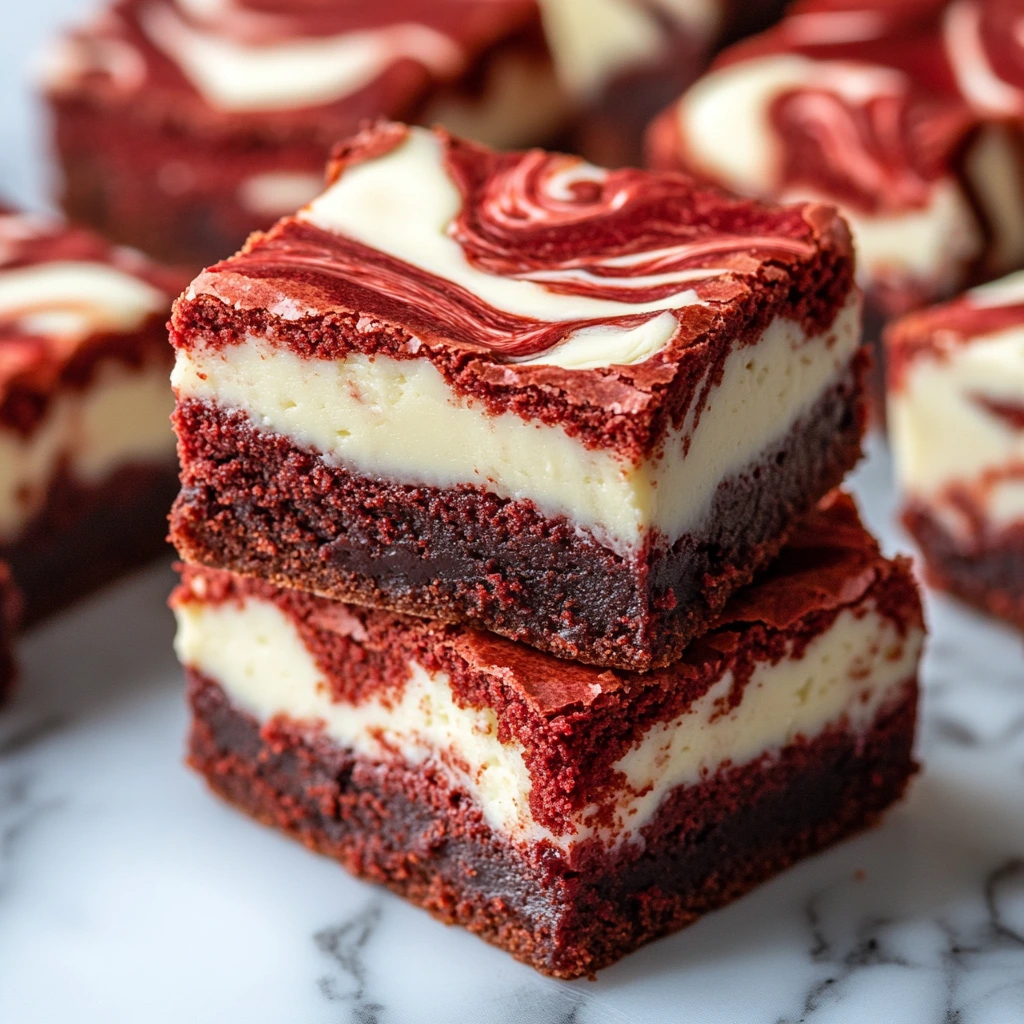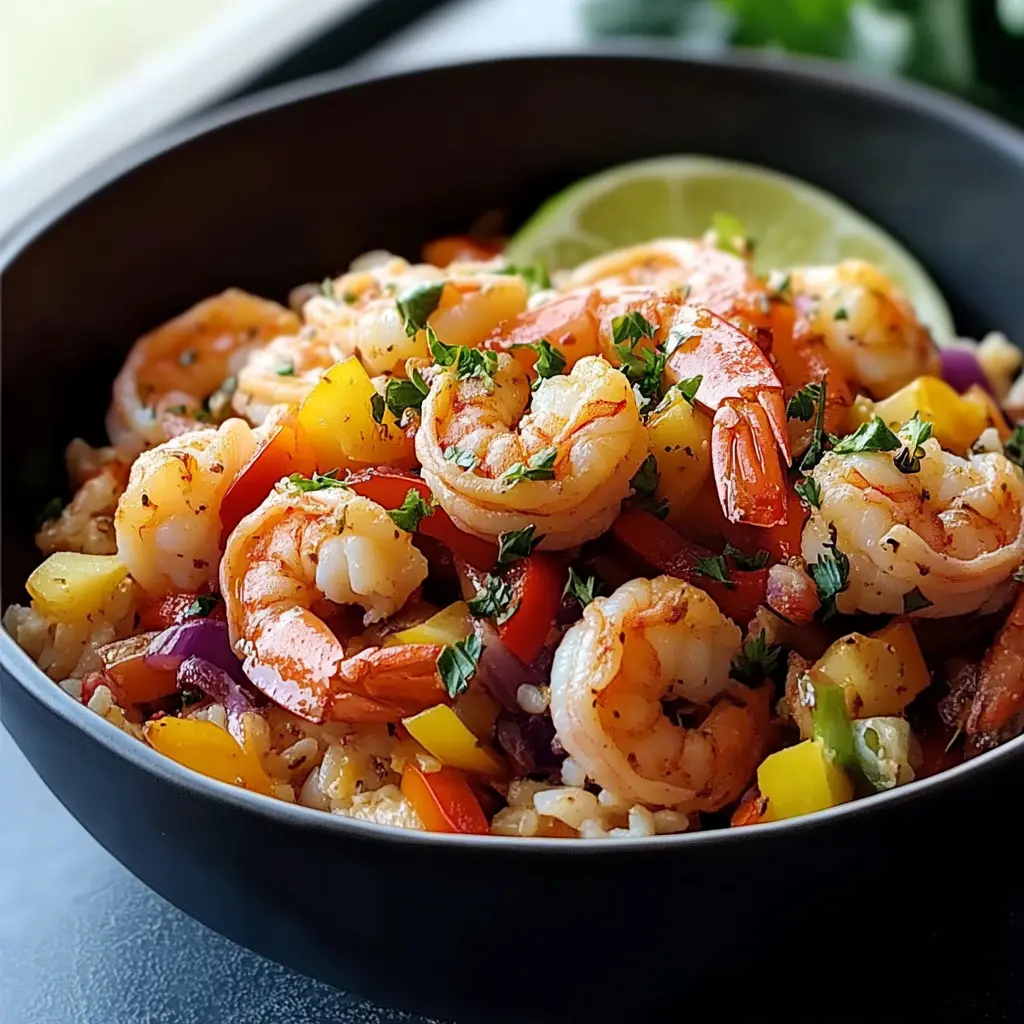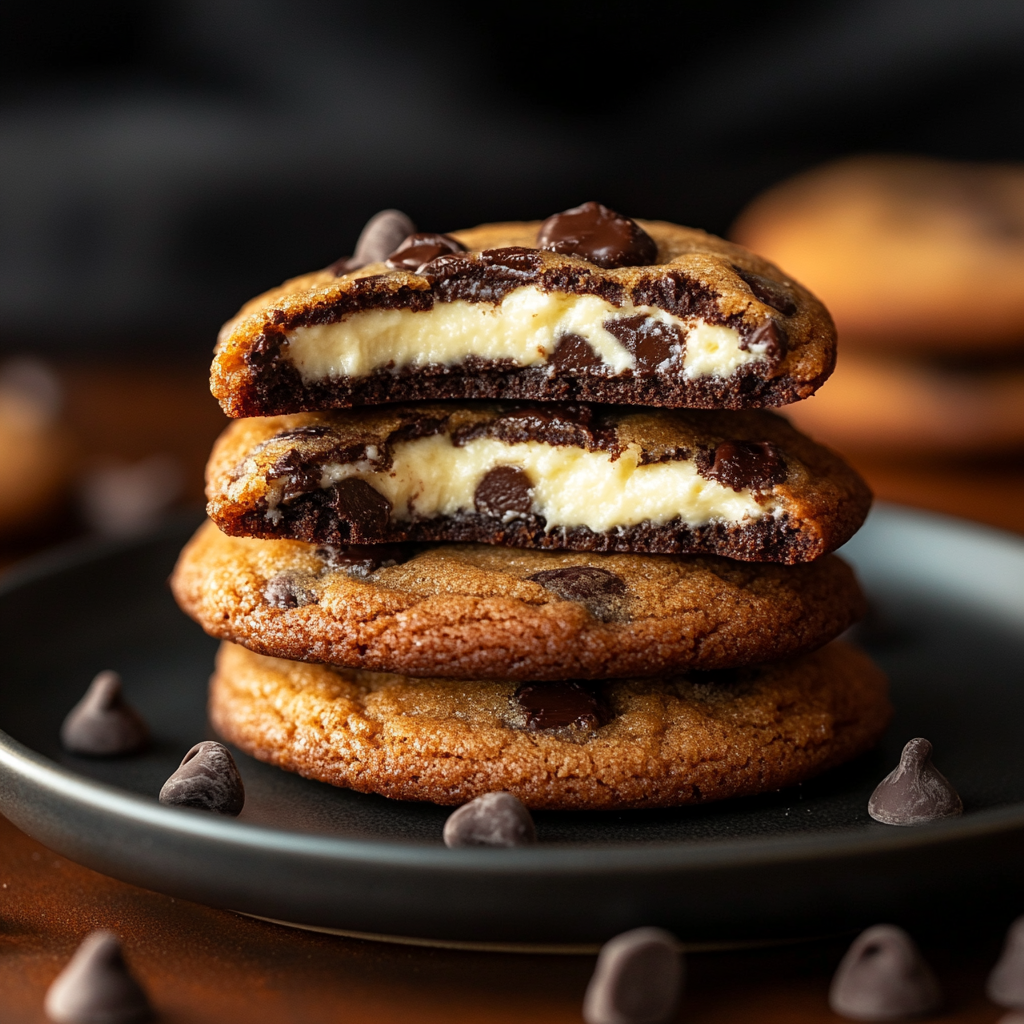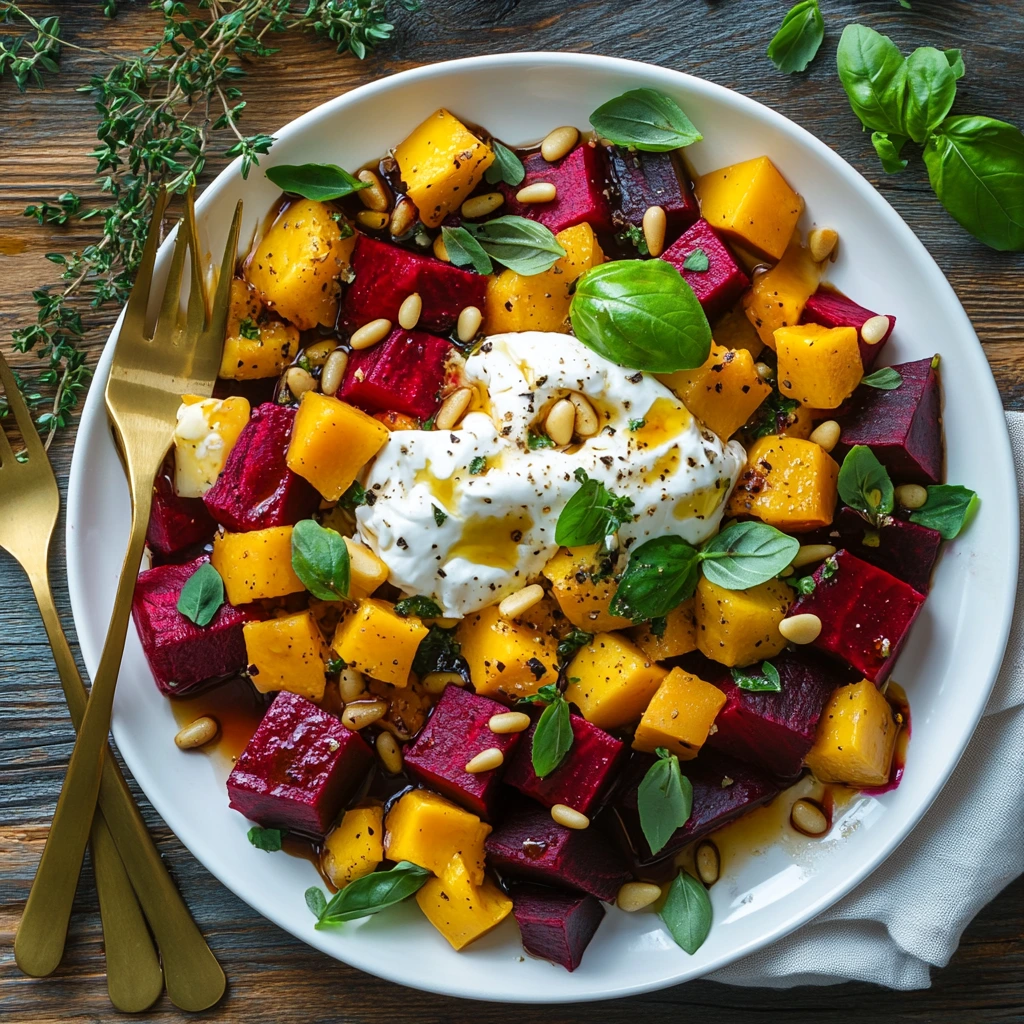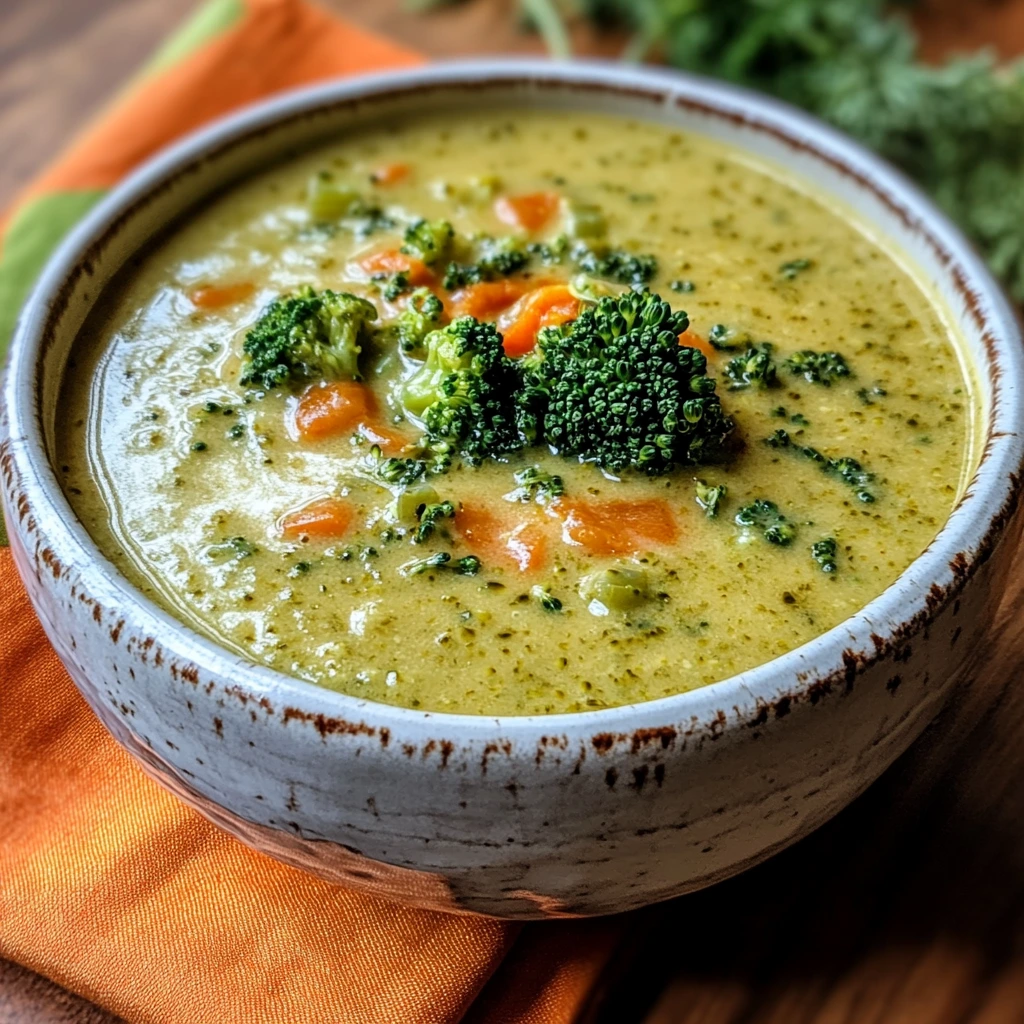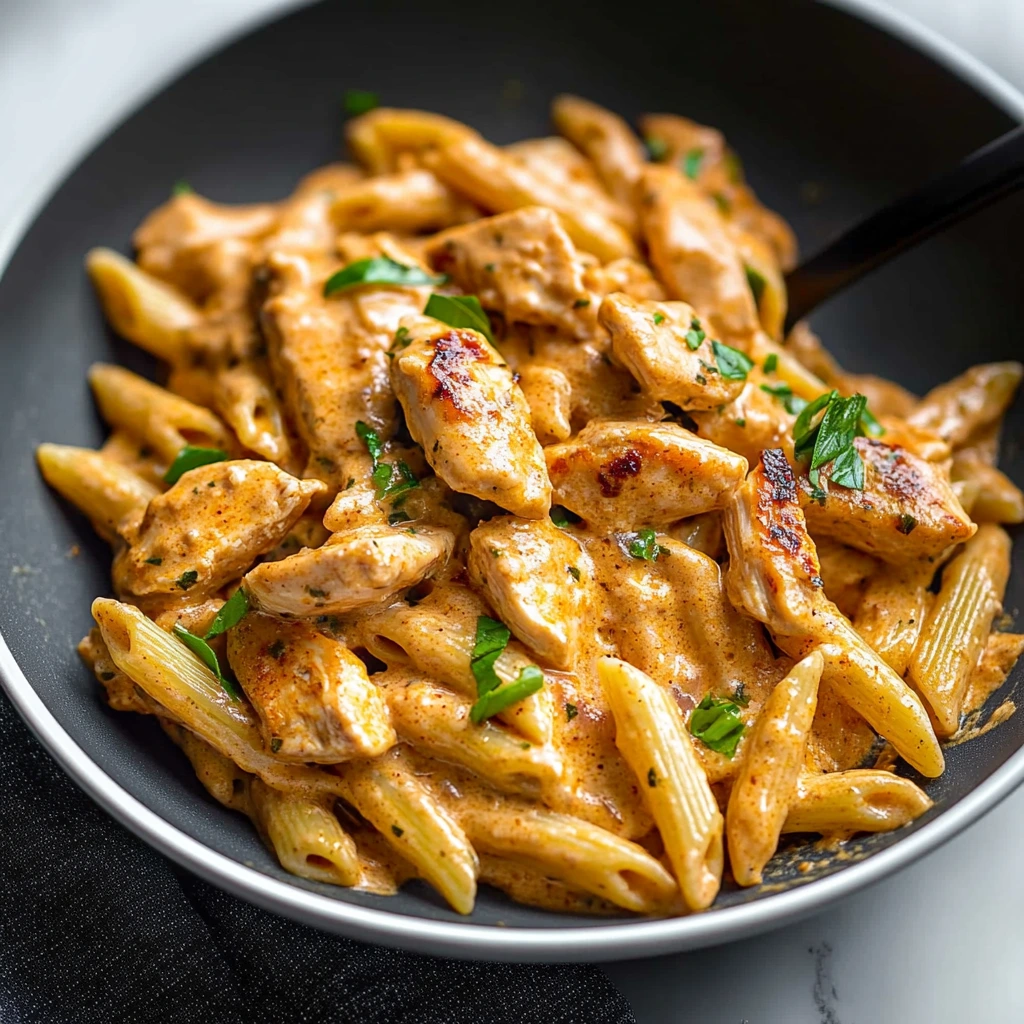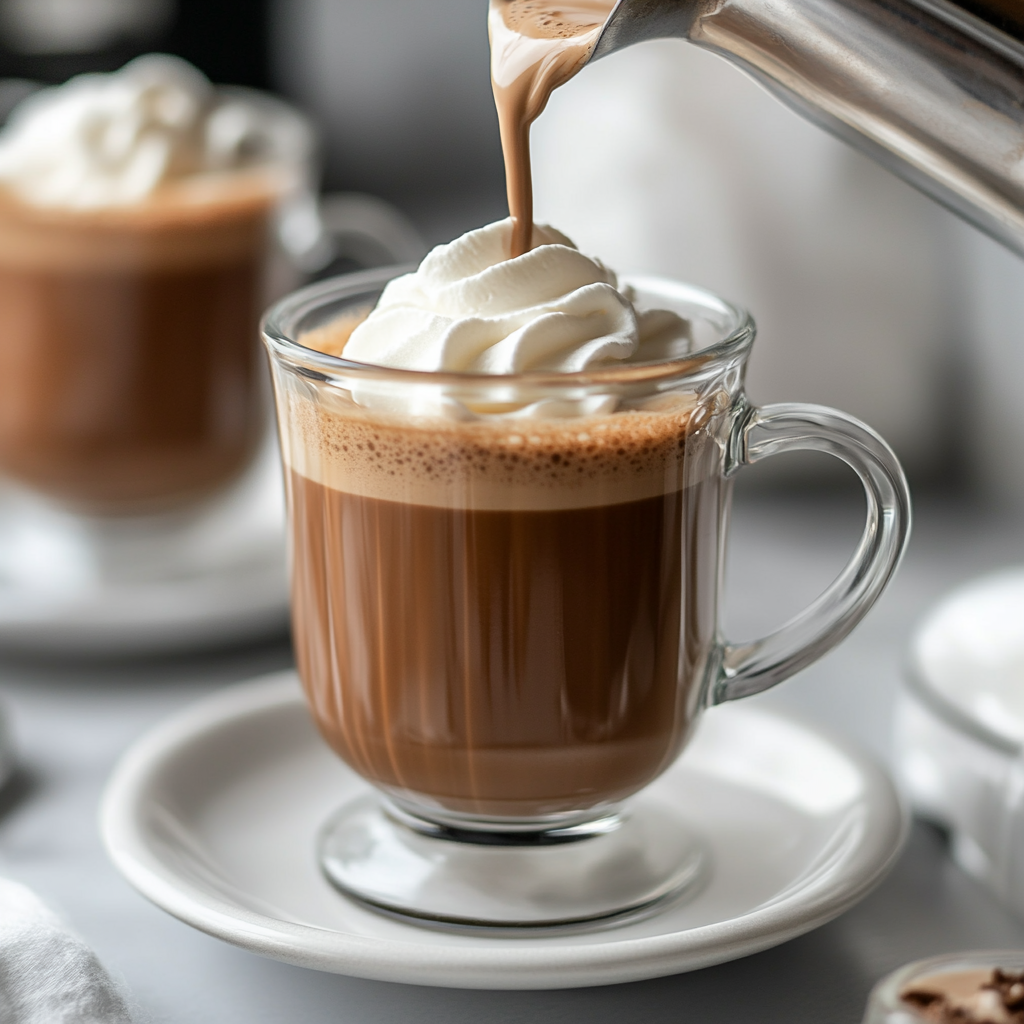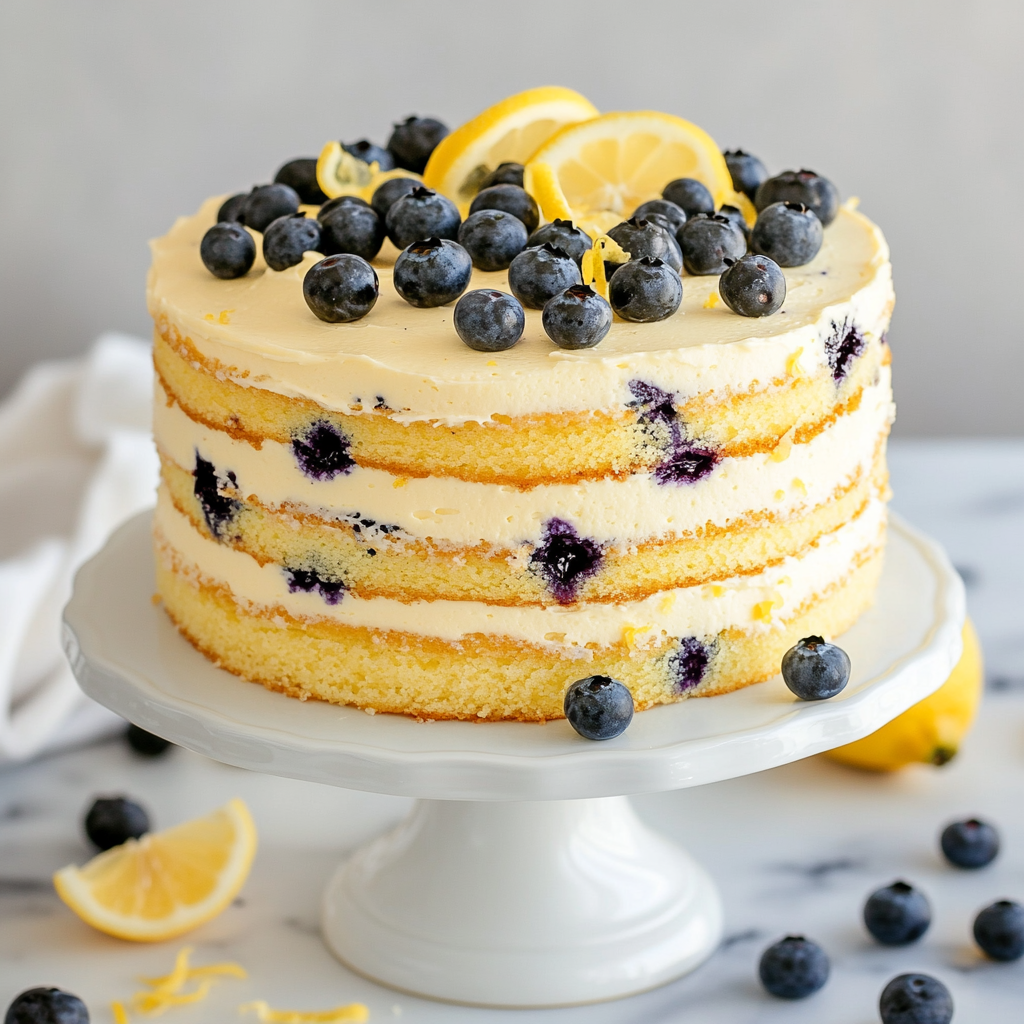Garlic Parmesan Chicken Tortellini brings together tender cheese-filled pasta, succulent chicken, and a luxuriant garlic-Parmesan sauce to create a dish that satisfies on every level. The interplay of flavors—from the sharp nuttiness of freshly grated Parmesan to the gentle warmth of sautéed garlic—elevates this recipe beyond ordinary weeknight fare. Whether served as a cozy family dinner or presented at a gathering with friends, its rich creaminess and comforting aroma entice the senses from the very first bite. In this article, we’ll explore what defines this beloved dish, delve into its historical roots, and guide you through each step of preparation. You’ll learn about the essential ingredients that make this recipe shine, the tools and techniques needed to achieve restaurant-quality results, and the nutritional profile that helps you balance indulgence with wellness. By the end, you’ll be fully equipped to master Garlic Parmesan Chicken Tortellini and adapt it to suit your personal tastes and occasions.
What Is Garlic Parmesan Chicken Tortellini?
Garlic Parmesan Chicken Tortellini is a fusion of Italian pasta tradition and modern comfort-food sensibility. At its core, it features tortellini—ring-shaped pasta pockets typically stuffed with a blend of cheese, such as ricotta, Parmesan, or mozzarella—cooked al dente and then tossed with bite-sized pieces of seasoned chicken. The sauce, a velvety emulsion of garlic sautéed in butter, heavy cream, and freshly grated Parmesan cheese, envelops the pasta and chicken, creating a cohesive dish that balances richness with bright aromatic notes. Optional additions like baby spinach, sun-dried tomatoes, or green peas can be stirred in to introduce color, texture, and extra nutrients. Unlike a simple pasta primavera or chicken Alfredo, this recipe highlights the tortellini’s unique shape and filling, ensuring each forkful delivers both pasta and cheese in every mouthful.
Why This Recipe Is So Popular
The enduring popularity of Garlic Parmesan Chicken Tortellini stems from its irresistible combination of convenience, flavor, and versatility. First, it streamlines weeknight cooking: with store-bought tortellini and minimal prep for the chicken and sauce components, dinner can be on the table in under 30 minutes. Second, its rich, creamy sauce—elevated by the sharp tang of Parmesan and the savory warmth of garlic—appeals to a wide range of palates, from adults seeking sophisticated comfort to children who love cheesy pasta. Third, it adapts effortlessly to different dietary needs and seasonal produce. You can lighten it with half-and-half or Greek yogurt, swap chicken for shrimp or turkey, or bulk it up with vegetables like broccoli or mushrooms. Finally, its restaurant-style presentation makes it ideal for entertaining, while its make-ahead and freezer-friendly nature turns it into a meal-prep superstar.
History & Origins
Tortellini traces its roots to the Emilia-Romagna region of northern Italy, where, according to legend, a chef inspired by Venus’s navel crafted the pasta’s distinctive ring shape. Traditionally filled with prosciutto, mortadella, and Parmigiano-Reggiano, tortellini became a holiday delicacy, often served in a clear broth (brodo). Over centuries, Italian emigrants and global culinary exchange introduced variations on the classic recipe, including cheese-only tortellini and Alfredo-style preparations. The incorporation of chicken reflects American adaptations of Italian cuisine, where grilled or sautéed poultry complements creamy, cheese-laden sauces. The marriage of garlic and Parmesan in a cream sauce owes much to northern Italian traditions of butter- and cheese-based cooking, while the addition of heavy cream and garlic likely drew inspiration from French culinary influences. Today, Garlic Parmesan Chicken Tortellini stands as a testament to the ongoing evolution of Italian comfort food in home kitchens worldwide.
Key Ingredients Overview
Cheese Tortellini
Choose fresh or frozen cheese tortellini for the best texture—look for pasta filled with a blend of ricotta and Parmesan or similar high-quality cheeses. Fresh tortellini cooks in just a few minutes and delivers a tender bite, while frozen offers convenience without sacrificing flavor.
Chicken
Boneless, skinless chicken breast or thigh both work well. Breast yields leaner slices, whereas thigh offers more forgiving moisture and flavor. Cut into uniform bite-sized pieces, then season with salt, pepper, and optional Italian herbs before sautéing or grilling to golden perfection.
Garlic
Fresh garlic cloves are essential for vibrant flavor. Mince or thinly slice two to four cloves, depending on your preference, and sauté gently in butter or olive oil until fragrant but not browned, which preserves the garlic’s sweet, mellow notes.
Parmesan Cheese
Always grate Parmesan from a whole wedge—pre-grated varieties lack the depth and creaminess you need for sauce. Freshly grated Parmigiano-Reggiano melts smoothly into the cream, offering a nutty, salty backbone.
Cream and Butter
Heavy cream or half-and-half forms the sauce’s base. Heavy cream yields a richer, more indulgent texture, while half-and-half lightens the dish without compromising on creaminess. Unsalted butter lends a silky mouthfeel and helps marry flavors together.
Seasonings
Salt and freshly ground black pepper are non-negotiable. Additional Italian seasoning, red pepper flakes for heat, or a splash of white wine can elevate the sauce. A pinch of nutmeg, a classic in many cream sauces, adds subtle warmth.
Optional Add-Ins
Leafy greens like baby spinach wilt into the hot sauce, adding color and nutrients. Sun-dried tomatoes contribute tang and chewiness, peas enhance sweetness and brightness, and sautéed mushrooms bring an earthy dimension. Adjust quantities to suit your taste and to balance the dish visually and nutritionally.
Required Equipment & Prep Work
To achieve the best results, gather these tools before you begin: a large pot for boiling tortellini, a sizable sauté pan or skillet for cooking chicken and sauce, a sharp chef’s knife and cutting board for prepping garlic and chicken, and a fine grater for fresh Parmesan. You’ll also need measuring cups and spoons for precise liquid ratios. Prep work includes trimming and cubing the chicken, grating Parmesan, mincing garlic, and draining the cooked tortellini. If using add-ins like spinach or sun-dried tomatoes, rinse, chop, or drain them in advance. Having ingredients and tools organized—mise en place—ensures a seamless cooking process and prevents overcooking the pasta or sauce separation.
Nutritional Highlights
A standard serving of Garlic Parmesan Chicken Tortellini delivers approximately 550–650 calories, depending on portion size and specific ingredient choices. You can expect around 25–30 grams of protein from the combination of chicken and cheese-filled pasta, making it a protein-rich meal. Fat content hovers near 30–35 grams, primarily from butter, heavy cream, and cheese; opting for half-and-half or light cream reduces total fat by up to 20%. Carbohydrates total about 50–60 grams, sourced largely from the tortellini. To lighten the dish, swap in reduced-fat dairy, increase vegetable add-ins, or reduce sauce volume. For a lower-carb alternative, substitute zucchini noodles or spaghetti squash for tortellini, though the taste and texture profile will shift accordingly.
Step-by-Step Cooking Instructions
-
Prep the Chicken
Pat 1 pound of boneless, skinless chicken breasts (or thighs) dry with paper towels. Slice into bite-sized pieces, then season generously with salt, freshly ground black pepper, and a light sprinkle of Italian seasoning or dried oregano. Let rest at room temperature while you prepare other components. -
Boil the Tortellini
Bring a large pot of salted water to a vigorous boil. Add 1 pound of fresh or frozen cheese tortellini and cook according to package instructions until al dente—usually 2–3 minutes for fresh or 4–6 minutes for frozen. Stir gently to prevent sticking. Reserve ½ cup of the pasta water, then drain the tortellini and set aside. -
Sauté the Chicken
In a deep sauté pan over medium-high heat, melt 1 tablespoon of unsalted butter and swirl in 1 teaspoon of olive oil. Add the seasoned chicken pieces in a single layer and cook without disturbing for 2–3 minutes to develop a golden crust. Flip and cook another 2–3 minutes until cooked through. Transfer chicken to a plate and tent with foil. -
Build the Garlic Parmesan Sauce
Lower the heat to medium. Add another tablespoon of butter to the pan, then stir in 3–4 cloves of minced garlic. Cook until fragrant—about 30 seconds—being careful not to let it brown. Pour in 1 cup of heavy cream (or half-and-half for a lighter sauce) and bring to a gentle simmer. Stir frequently to prevent scorching. -
Incorporate Cheese and Seasonings
Reduce heat to low. Gradually whisk in 1 cup of freshly grated Parmesan cheese, adding a little at a time to ensure a smooth emulsification. If the sauce seems too thick, stir in reserved pasta water one tablespoon at a time until you reach your desired consistency. Season with additional salt, pepper, and a pinch of red pepper flakes or nutmeg if using. -
Combine Pasta, Chicken, and Sauce
Return the cooked chicken to the pan along with the drained tortellini. Gently toss with the sauce until each piece is coated evenly. If adding optional vegetables—such as 2 cups of baby spinach or ½ cup of thawed peas—stir them in now and cook just until heated through and the spinach wilts. -
Finish and Garnish
Taste and adjust seasoning. Remove from heat and let rest for a minute to thicken slightly. Plate the tortellini and chicken, then garnish with a sprinkle of chopped fresh parsley or basil and an extra dusting of Parmesan. Serve immediately, while the sauce is luxuriously warm and creamy.
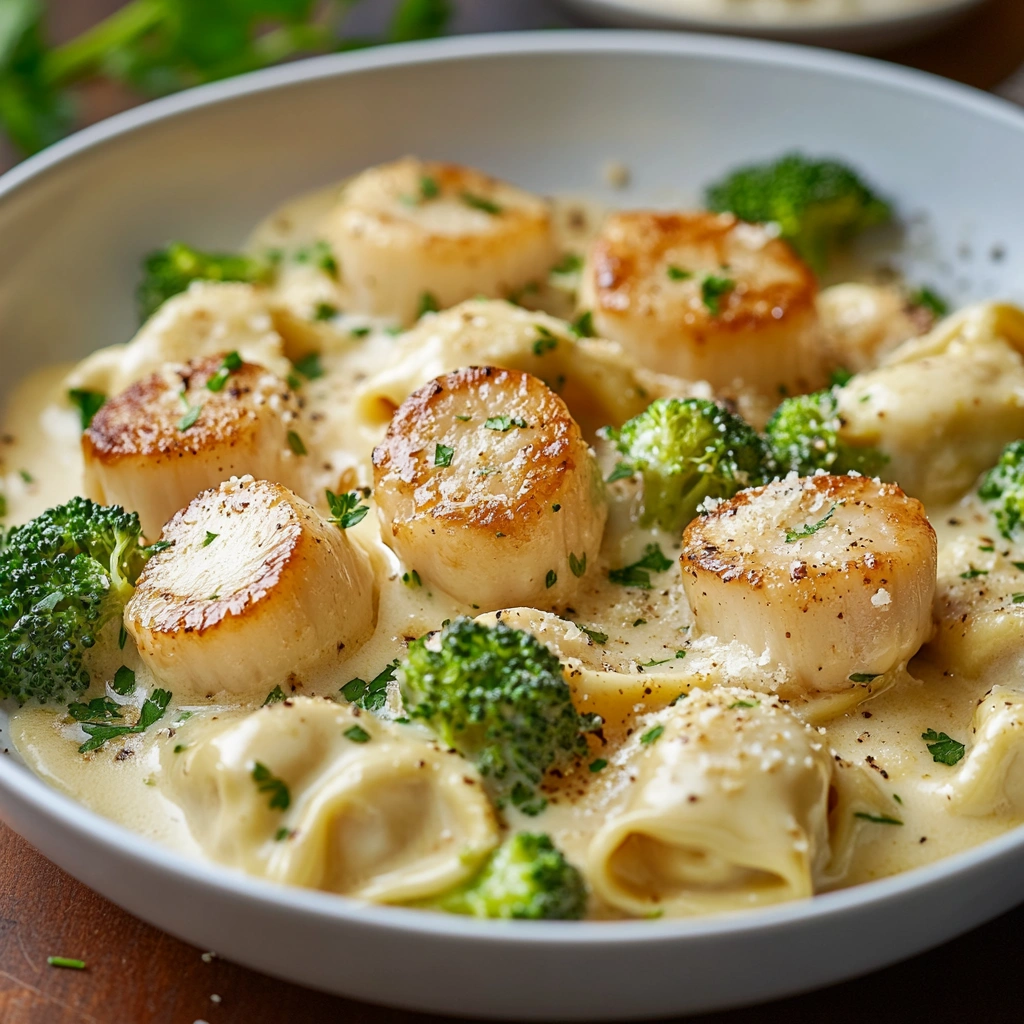
Tips, Tricks & Variations
-
Protein Swaps: Substitute turkey breast or cooked shrimp for chicken. Reduce shrimp cooking time to just 2–3 minutes until pink and opaque.
-
Sauce Enhancements: Deglaze your pan after cooking chicken with a splash of dry white wine (½ cup) before adding cream. This adds depth and acidity. Stir in a tablespoon of pesto at the end for a bright, herbaceous note.
-
Vegetable Add-Ins: Broccoli florets, sliced mushrooms, or roasted red peppers work beautifully. If using raw broccoli, blanch for 2 minutes before adding; mushrooms should be sautéed separately until golden.
-
Cheese Variations: Try a blend of Parmesan and Pecorino Romano for a sharper profile, or stir in a handful of shredded mozzarella at the end for extra stretch.
-
Lightened-Up Version: Swap heavy cream for low-fat milk thickened with a teaspoon of cornstarch. Reduce butter by half and use olive oil instead. Increase spinach or peas to bulk up the dish without adding calories.
-
Make-Ahead & Freezer-Friendly: Prepare the sauce and chicken, then undercook the tortellini by 1 minute. Combine all, cool completely, and store in an airtight container for up to 2 days in the fridge or 2 months in the freezer. Thaw in the fridge overnight and reheat gently, adding a splash of water or milk to revive the sauce.
Serving Suggestions & Pairings
Pair Garlic Parmesan Chicken Tortellini with a crisp green salad dressed in lemon vinaigrette to cut through the richness. Garlic bread or toasted ciabatta provides a crunchy contrast and a vehicle for extra sauce. For wine, choose a medium-bodied Chardonnay with notes of citrus and oak, or a Pinot Grigio for a lighter, crisper accompaniment. Garnish each plate with finely chopped fresh parsley or basil leaves and an additional grating of Parmesan for visual appeal and a burst of herbaceous freshness.
Storage, Reheating & Meal-Prep
To store, cool the cooked tortellini and sauce to room temperature, then transfer to an airtight container. Refrigerate for up to 3 days or freeze for up to 2 months. When reheating from the fridge, warm gently in a skillet over low heat, stirring in a splash of milk or pasta water to loosen the sauce. For frozen portions, thaw overnight in the refrigerator before reheating. Divide into meal-prep containers for grab-and-go lunches; add fresh spinach or cherry tomatoes just before serving to maintain texture and color.
Frequently Asked Questions
Can I use frozen tortellini?
Yes—frozen tortellini is convenient and maintains quality. Just extend boiling time by 1–2 minutes and drain carefully to avoid splitting the pasta pockets.
How do I prevent the sauce from separating?
Keep heat moderate when incorporating cheese, whisking continuously. Avoid boiling the cream once the cheese is added and stir in reserved pasta water to stabilize the emulsion.
Is there a dairy-free alternative?
Use dairy-free “cream” made from cashews or coconut milk, and replace Parmesan with a vegan hard cheese alternative. Be prepared for a slightly different flavor profile.
Can I make this gluten-free?
Swap in gluten-free tortellini or another stuffed pasta. Ensure all seasonings and cheese are labeled gluten-free. Cooking times may vary slightly.
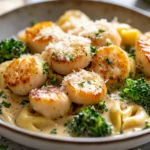
Garlic Parmesan Chicken Tortellini
Description
Garlic Parmesan Chicken Tortellini is a crowd-pleasing, one-pan meal that combines tender cheese-filled pasta with juicy, seasoned chicken in a luxuriously creamy garlic-Parmesan sauce. Ready in under 30 minutes, this dish balances rich, savory flavors with the bright warmth of fresh garlic and a hint of herbs. Perfect for weeknight dinners, family gatherings, or casual entertaining, it delivers restaurant-quality comfort without complicated steps or hard-to-find ingredients. Customize with your favorite vegetables or protein swaps to make it uniquely yours.
Ingredients
- 12 ounces cheese tortellini.
- 2 chicken breasts, bite-sized.
- 2 tablespoons olive oil.
- 4 garlic cloves, minced.
- 1 cup heavy cream.
- 1/2 cup chicken broth.
- 1 cup Parmesan, freshly grated.
- 2 cups broccoli florets.
- 1 teaspoon Italian seasoning.
- Fresh parsley for garnish.
- Salt and pepper to taste.
Instructions
- Boil tortellini according to package. Fresh takes 3-5 minutes, frozen 8-10 minutes.
- Heat oil, cook seasoned chicken until golden, 5-7 minutes. Set aside.
- Sauté garlic 1 minute. Add cream and broth, simmer 2-3 minutes. Stir in Parmesan until melted.
- Add chicken, broccoli, and tortellini to sauce. Toss until coated.
- Adjust seasoning and garnish with parsley.
Notes
- Pasta Water Is Key: Reserve a little cooking water before draining tortellini. Blended into the sauce, it helps achieve a silky consistency and ensures every piece is coated evenly.
- Cheese Matters: Always grate your own Parmigiano-Reggiano for optimal flavor and melting quality—pre-grated cheese can lead to a grainy sauce.
- Temperature Control: Keep the sauce at a gentle simmer when adding cheese to prevent separation. Avoid boiling once the dairy is combined.
- Make-Ahead Tip: Prepare the chicken and sauce up to two days in advance; undercook tortellini by one minute. Store separately and finish cooking just before serving for freshest taste.
- Freezer-Friendly: Assemble the full dish, cool completely, then freeze in meal-sized portions. Thaw overnight in the refrigerator and reheat gently, stirring in a splash of milk to revive creaminess.
- Lighten It Up: Swap heavy cream for half-and-half or use low-fat milk thickened with cornstarch. Add extra spinach or peas for bulk and color without added calories.
- Allergy Swaps: For a dairy-free version, use cashew cream or coconut milk and a vegan Parmesan alternative; for gluten-free, select certified gluten-free tortellini.


